BLOG - Page 31
Recently created mixtures:

Sea-Buckthorn Macerated oil
February 7, 2019

Home made air freshener
June 29, 2016

Homemade Dog-rose distillate
June 28, 2016

Homemade jasmine distillate
June 22, 2016

Moxibustion treatment with Moxa stick
May 30, 2016

Face and body gentle oil cleanser
May 26, 2016
BLOG / LATEST ADDITIONS!
Aloe Vera (Aloe Barbadensis) ☸ Ingredients ☸ Medicine / Health
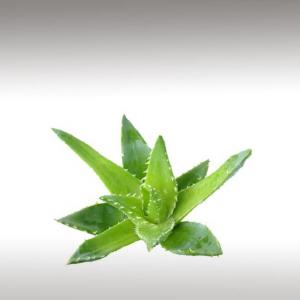

Aloe Vera might be effective in reducing blood glucose in diabetic patients and in lowering blood lipid levels in hyperlipidaemia. The topical application of aloe vera does not seem to prevent radiation-induced skin damage. It might be useful as a treatment for genital herpes and psoriasis. The evidence regarding wound healing is contradictory.
One of the reviews found that Aloe has not been proven to offer protection for humans from sunburn, suntan, or other damage from the sun. Aloe Vera might be an effective interventions used in burn wound healing for first- to second-degree burns. Topical application of aloe vera may also be effective for genital herpes and psoriasis.
Aloe Vera can try on include blisters, insect bites, rashes, sores, herpes, athlete's foot, fungus, conjunctivitis, sites, allergic reactions, and dry skin. The raw plant is best.
Other topical uses include acne, frostbite (it appears to prevent decreased blood flow), shingles, screening out x-ray radiation, psoriasis, preventing scarring, rosacea, warts, wrinkles from aging, and eczema.
It is used in dentistry and is extremely helpful in the treatment of gum disease and bleeding gums. It is a powerful antiseptic for gum pockets and conditions. Aloe has anti-fungal properties which help greatly in dental problems and skin diseases like eczema and psoriasis.
Numerous studies worldwide indicate that it is a general tonic for the immune system, helping it to fight illness of all kinds. Various research studies are underway to explore the potential of the components to boost immunity and combat the HIV virus, and to treat certain types of cancer (particularly leukemia).
It also seems to help prevent opportunistic infections in cases of HIV and AIDS. It appears to be of help in cancer patients including lung cancer by activating the white blood cells and promoting growth of non-cancerous cells.
Taken orally Aloe also appears to work on heartburn, arthritis and rheumatism pain and asthma, and studies have shown that it has an effect on lowering blood sugar levels in diabetic.
Other situations in which it appears to work when taken internally include congestion, intestinal worms, indigestion, stomach ulcers, colitis, haemorrhoids, liver problems such as cirrhosis and hepatitis, kidney infections, urinary tract infections, prostate problems, and as a general detoxifier.
Aloe Vera (Aloe Barbadensis) is generally classified as non-toxic or harmful.
One of the reviews found that Aloe has not been proven to offer protection for humans from sunburn, suntan, or other damage from the sun. Aloe Vera might be an effective interventions used in burn wound healing for first- to second-degree burns. Topical application of aloe vera may also be effective for genital herpes and psoriasis.
Aloe Vera can try on include blisters, insect bites, rashes, sores, herpes, athlete's foot, fungus, conjunctivitis, sites, allergic reactions, and dry skin. The raw plant is best.
Other topical uses include acne, frostbite (it appears to prevent decreased blood flow), shingles, screening out x-ray radiation, psoriasis, preventing scarring, rosacea, warts, wrinkles from aging, and eczema.
It is used in dentistry and is extremely helpful in the treatment of gum disease and bleeding gums. It is a powerful antiseptic for gum pockets and conditions. Aloe has anti-fungal properties which help greatly in dental problems and skin diseases like eczema and psoriasis.
Numerous studies worldwide indicate that it is a general tonic for the immune system, helping it to fight illness of all kinds. Various research studies are underway to explore the potential of the components to boost immunity and combat the HIV virus, and to treat certain types of cancer (particularly leukemia).
It also seems to help prevent opportunistic infections in cases of HIV and AIDS. It appears to be of help in cancer patients including lung cancer by activating the white blood cells and promoting growth of non-cancerous cells.
Taken orally Aloe also appears to work on heartburn, arthritis and rheumatism pain and asthma, and studies have shown that it has an effect on lowering blood sugar levels in diabetic.
Other situations in which it appears to work when taken internally include congestion, intestinal worms, indigestion, stomach ulcers, colitis, haemorrhoids, liver problems such as cirrhosis and hepatitis, kidney infections, urinary tract infections, prostate problems, and as a general detoxifier.
Aloe Vera (Aloe Barbadensis) is generally classified as non-toxic or harmful.
Submitted by OperaDreamhouse (October 30, 2014)
Aloe Vera (Aloe Barbadensis) ☸ Ingredients ☸ Beauty / Cosmetics


Aloe Vera is commonly found in facial moisturizers, serums, treatments, healing ointments, body lotions and creams, sunscreens, and after-sun products. Aloe can also be used on its own.
Aloe was used by the Ancient Greeks, Arabs and Spaniards and is still used by hunters in Africa to reduce perspiration and body scent.
Aloe was used by the Ancient Greeks, Arabs and Spaniards and is still used by hunters in Africa to reduce perspiration and body scent.
Submitted by OperaDreamhouse (October 30, 2014)
Alum Crystal (Potassium Alum) ☸ Ingredients ☸ Base / General
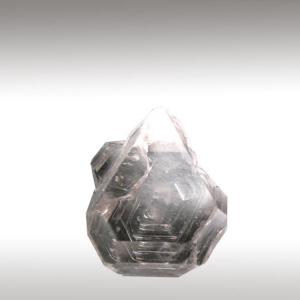

Potassium Alum is the white crystalline natural mineral salt (double sulfate) of Potassium. Potassium Alum is specific chemical compound that is also part of a class of Alum chemical compounds. The term Alum refers to variousdouble sulfates that have the general formula of (SO4)3•24H2O plus an additional element, such as Potassium, which results in Potassium Aum: KAL(SO4)2•12H2O.
Potassium Alum has been a sought after natural mineral salt for thousands of years due to its abilities to effectively contribute to water purification, pickling, tanning, medical procedures and in cosmetics as an aftershave or deodorant. Additionally, due to its attractive Crystal appearance, Potassium Alum has become a favorite amongst mineral collectors. It is commonly used in water purification, leather tanning, dyeing, fireproof textiles, and baking powder.
Potassium Alum (Alumbre) is a naturally occurringsulfate mineral which typically occurs as encrustations on rocks in areas of weathering and oxidation of sulfide minerals and potassium-bearing minerals. The crystal Alum mineral is commercially extracted in select quarries throughout the world. It has been reported in Tennessee, and Arizona in the United States, and also, in South America, in the Andies between Bolivia, Chile and Argentina.
Potassium Alum crystallizes in regular octahedra with flattened corners, and is very soluble in water. The solution reddens litmus and is an astringent. When heated to nearly a red heat it gives a porous, friable mass which is known as "Burnt Alum". It fuses at 92 °C in its own water of crystallization. "Neutral Alum" is obtained by the addition of as much Sodium Carbonate to a solution of Alum as will begin to cause the separation of Alumina.
Potassium Alum has been a sought after natural mineral salt for thousands of years due to its abilities to effectively contribute to water purification, pickling, tanning, medical procedures and in cosmetics as an aftershave or deodorant. Additionally, due to its attractive Crystal appearance, Potassium Alum has become a favorite amongst mineral collectors. It is commonly used in water purification, leather tanning, dyeing, fireproof textiles, and baking powder.
Potassium Alum (Alumbre) is a naturally occurringsulfate mineral which typically occurs as encrustations on rocks in areas of weathering and oxidation of sulfide minerals and potassium-bearing minerals. The crystal Alum mineral is commercially extracted in select quarries throughout the world. It has been reported in Tennessee, and Arizona in the United States, and also, in South America, in the Andies between Bolivia, Chile and Argentina.
Potassium Alum crystallizes in regular octahedra with flattened corners, and is very soluble in water. The solution reddens litmus and is an astringent. When heated to nearly a red heat it gives a porous, friable mass which is known as "Burnt Alum". It fuses at 92 °C in its own water of crystallization. "Neutral Alum" is obtained by the addition of as much Sodium Carbonate to a solution of Alum as will begin to cause the separation of Alumina.
Submitted by OperaDreamhouse (October 20, 2014)
Damask Rose Essential Oil (Rosa Damascena) ☸ Essential oils ☸ Food / Cooking

 Extraction:
Extraction:
Anicenna, the 10th century Persian physician, used the Rose as his first plant to distill and a Rose distillery existed in 1612 in Shiraz, Persia.
It takes about 60,000 Roses (about 180 lb) to make one ounce ( 29,57 ml) of Rose Otto - or to put in a different way 40,000 kilograms to make 1 liter of Rose Otto.
Rose Otto Oil is extracted from the fresh flowers, picked before 8 am in the morning, by steam distillation and the yield is 0.02 -0.05 %. The heat used in the distillation process is carefully controlled, as the aroma can be damaged if the heat is too high.
Submitted by OperaDreamhouse (October 13, 2014)
Damask Rose Essential Oil (Rosa Damascena) ☸ Essential oils ☸ Spiritual Practises

 Rose petals were scattered at weddings to ensure a happy marriage and are still a symbol of love and purity and are also used to aid meditation and prayer.
Rose petals were scattered at weddings to ensure a happy marriage and are still a symbol of love and purity and are also used to aid meditation and prayer.Submitted by OperaDreamhouse (October 13, 2014)
Damask Rose Essential Oil (Rosa Damascena) ☸ Essential oils ☸ Food / Cooking

 India has also developed an industry producing Rose Oil (both Rose Attar and Rose Absolutes) as well as Rose Concrete. Perhaps due to the low labor cost and the commitment of the Indian Government to international trade and high quality standards, these products from India today are cheaper than those from Bulgaria and Turkey.
India has also developed an industry producing Rose Oil (both Rose Attar and Rose Absolutes) as well as Rose Concrete. Perhaps due to the low labor cost and the commitment of the Indian Government to international trade and high quality standards, these products from India today are cheaper than those from Bulgaria and Turkey.Submitted by OperaDreamhouse (October 13, 2014)
Ambrette Seed Essential Oil (Abelmoschus Moschatus) ☸ Essential oils ☸ Spiritual Practises
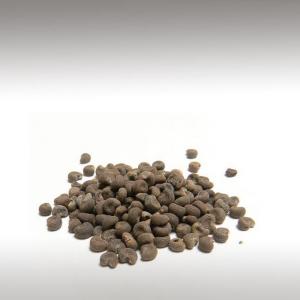

Musk Ambrette stimulates the Base chakra and raises the Kundalini snake.
It is used in sex magic and tantric practices. The sensuous scent is tantalizing and arousing. It may be used to overcome inhibitions and blockages of sexual energy.
From an aromatherapy standpoint, Ambrette is reputed to balance hormones in both men and women, acts as a powerful adrenal stimulant, considered an aphrodisiac.
It is used in sex magic and tantric practices. The sensuous scent is tantalizing and arousing. It may be used to overcome inhibitions and blockages of sexual energy.
From an aromatherapy standpoint, Ambrette is reputed to balance hormones in both men and women, acts as a powerful adrenal stimulant, considered an aphrodisiac.
Submitted by OperaDreamhouse (October 9, 2014)
Buchu Leaf Essential Oil (Agathosma Crenulata) ☸ Essential oils ☸ Base / General
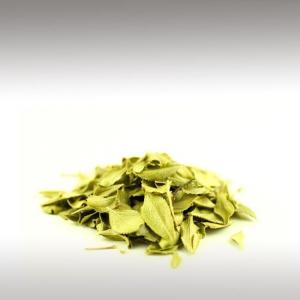

Agathosma crenulata is a flowering plant in the family Rutaceae, native to the lower elevation mountains of southwestern South Africa. Many of the species are highly aromatic, and the genus name means "good fragrance". Some species of the genus are used as herbal remedies.
Botanical Name: Agathosma crenulata
Common Method of Extraction: Steam distilled
Part Typically Used: Fresh or dried leaves
Color:
Consistency:
Perfumery Note: Middle
Strength of Initial Aroma: Black currant like odor. Green minty, buchu-like with sulfureous mango, tropical and berry notes.
Common names include Buchu, Boegoe, Bucco, Bookoo and Diosma. Buchu formally denotes two herbal species, prized for their fragrance and medicinal use.
This evergreen shrub with aromatic leaves forms a charming garden shrub with a rounded shape and grows to a height of 1,5 to 2,5 m. Starry white flowers, 1 to 3, are carried on short, leafless branchlets which form in the axils of the oval leaves. Flowers are 5-petalled, white or occasionally flushed pink. They decorate the shrub for 6-8 weeks between June and November. New shoots have distinctive red-flushed stems.
Agathosma crenulata occurs on damp lower slopes of the mountains of southwestern Cape from Tulbagh to Riversdale. In nature it prefers the middle slopes, particularly on siltier valley or shaly soils and often near water. Natural distribution is Mountain Fynbos.
Agathosma crenulata is commercially grown for their oil. The oil is extracted and used in the manufacture of cosmetics, soaps, food colorants.
Buchu Leaf, is a pure aromatherapy essential oil, produced using wild-crafted plants and traditional methods, from South Africa, obtained from the leaves.
Submitted by OperaDreamhouse (October 8, 2014)
Mountain Buchu Essential Oil (Agathosma Betulina) ☸ Essential oils ☸ Base / General
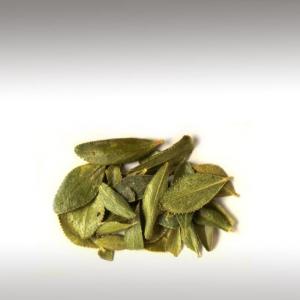
 Botanical Name: Agathosma betulina
Botanical Name: Agathosma betulinaCommon Method of Extraction: Steam distilled
Part Typically Used: Fresh or dried leaves
Color: Light
Consistency:
Perfumery Note:Not used
Strength of Initial Aroma: Blackcurrant like odor.
Agathosma betulina is a flowering plant in the family Rutaceae, native to the lower elevation mountains of western South Africa, where it occurs near streams in fynbos habitats.
It is an evergreen shrub growing to 2 m tall. The leaves are opposite, rounded, about 20 mm long and broad. The flowers are white or pale pink, with five petals; the fruit is a five-parted capsule which splits open to release the seeds.
It is known by the common name round Leaf Buchu and has historically been used as a flavoring agent and an herbal remedy. The very similar plant Agathosma Crenulata is known as the Oval Leaf Buchu, and has been used for the same purposes.
The essential oils and extracts of the leaves are used as flavoring for teas, candy, and a liquor known as buchu brandy in South Africa. The two primary chemical constituents of the oils of Agathosma betulina are isomenthone and diosphenol. The extract is said to taste like blackcurrant.
It is also known as mountain buchu, bookoo, buku and bucco. The true buchu would be the Agathosma betulina, as only Agathosma betulina is now recognized in the as having medicinal value due to the diosphenol (camphor) components.
Buchu oil has a strong Blackcurrant smell and is normally made as a tincture, extract and oleoresin, which are mostly used forpharmaceuticaluse. The oil is not used in aromatherapy.
Chemical structure:
The main chemical component of Buchu oil ared-pulegone, iso-pulegone, diosphenol, 4-diosphenol, iso-menthone and menthone.
Submitted by OperaDreamhouse (October 8, 2014)
Ambrette Seed Essential Oil (Abelmoschus Moschatus) ☸ Essential oils ☸ Base / General


Botanical Name: Abelmoschus moschatus
Common Method of Extraction: Steam Distilled
Part Typically Used: Fully ripened seeds
Color: Pale yellow-red liquid
Consistency: Light
Perfumery Note: Base / Middle
Strength of Initial Aroma: Sweet, rich, floral musky.
Ambrette is an aromatic and medicinal plant in the Malvaceae family, which is native to India but also cultivated in west indies, Indonesia and China. These seeds have a sweet, flowery, heavy fragrance quite similar to that of Musk(derived from Animal sources). Despite its tropical origin the plant is frost hardy.
Erect hispid herbs or undershrubs, 0,5-2,5 meters high, with a long slender tap root. Flowers regular, bisexual, involucral bracts 8-12, hairy yellow with purple centre.
Fruits capsule fulvous hairy, oblong lanceolate, acute. Seeds subreniform and blackish. The plant grows 5-sided seed pods after flowering. These pods are the source of the musk-scented seeds from which the essential oil is distilled.
It is usually sown in March - April but as late as the first week of July in Central India. April sown crop start flowering in September: fruits ripen from November to January and are harvested when fully mature.
In India it is popularly known as Mushkdana or Kasturi Bhendi. Oil is extracted from the musky, kidney- shaped, fully ripened seeds. The oil should be allowed to mature for a few months before use in flavours or fragrances, to allow the fatty acid notes to subdue and a rich, sweet, floral-musky almost wine-like or brandy like odour to develop.
The smell of Ambrette seed oil is very heavy and may not smell pleasant to everyone. Ambrette essential oil actually gets better with age. Ambrette seed oil must keep in a dark-colored glass bottle stored in a cool, dry, dark cabinet.
Ambrette seed essential oil is thought by aromatherapists and perfumers to have an exceptionally-unique natural molecularprofile - really, no other oil is like it. The Musk notes, and almost nutty-sweetness are enhanced by fruity undertones. The best of these oils are aged to present the smoothest aromatic profile.
In industry the root mucilage provides sizing for paper: tobacco is sometimes flavoured with the flowers.
Common Method of Extraction: Steam Distilled
Part Typically Used: Fully ripened seeds
Color: Pale yellow-red liquid
Consistency: Light
Perfumery Note: Base / Middle
Strength of Initial Aroma: Sweet, rich, floral musky.
Ambrette is an aromatic and medicinal plant in the Malvaceae family, which is native to India but also cultivated in west indies, Indonesia and China. These seeds have a sweet, flowery, heavy fragrance quite similar to that of Musk(derived from Animal sources). Despite its tropical origin the plant is frost hardy.
Erect hispid herbs or undershrubs, 0,5-2,5 meters high, with a long slender tap root. Flowers regular, bisexual, involucral bracts 8-12, hairy yellow with purple centre.
Fruits capsule fulvous hairy, oblong lanceolate, acute. Seeds subreniform and blackish. The plant grows 5-sided seed pods after flowering. These pods are the source of the musk-scented seeds from which the essential oil is distilled.
It is usually sown in March - April but as late as the first week of July in Central India. April sown crop start flowering in September: fruits ripen from November to January and are harvested when fully mature.
In India it is popularly known as Mushkdana or Kasturi Bhendi. Oil is extracted from the musky, kidney- shaped, fully ripened seeds. The oil should be allowed to mature for a few months before use in flavours or fragrances, to allow the fatty acid notes to subdue and a rich, sweet, floral-musky almost wine-like or brandy like odour to develop.
The smell of Ambrette seed oil is very heavy and may not smell pleasant to everyone. Ambrette essential oil actually gets better with age. Ambrette seed oil must keep in a dark-colored glass bottle stored in a cool, dry, dark cabinet.
Ambrette seed essential oil is thought by aromatherapists and perfumers to have an exceptionally-unique natural molecularprofile - really, no other oil is like it. The Musk notes, and almost nutty-sweetness are enhanced by fruity undertones. The best of these oils are aged to present the smoothest aromatic profile.
In industry the root mucilage provides sizing for paper: tobacco is sometimes flavoured with the flowers.
Submitted by OperaDreamhouse (October 8, 2014)
White Wormwood Essential Oil (Artemisia Herba-Alba) ☸ Essential oils ☸ Base / General
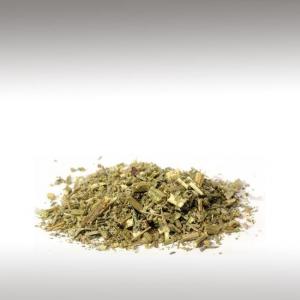

Botanical Name: Artemisia herba-alba
Common Method of Extraction: Steam Distilled
Part Typically Used: Whole Herb
Color: Dark green, or sometimes blue in colour
Consistency:
Perfumery Note:
Strength of Initial Aroma: Strong odour and bitter, acrid taste.
Artemisia Herba-Alba, also known as white Wormwood, is a perennial shrub in the genus Artemisia that grows commonly on the steppes of the Mediterranean regions in Northern Africa, Western Asia and Southwestern Europe, and in the Arabian Peninsula and Saharan Maghreb xeric steppes.
There are many different species of Artemisia (200 - 400), the most commonly known are Mugwort, Sagebrush, Wormwood, Tarragon. Artemisias belong to the family Asteraceae, as does Chamomile, Tansy and other plants.
It is also known as Desert Wormwood. The name Artemisia comes from the Greek Artemis, the goddess of hunting and the moon.
Artemisia Herba-Alba
Submitted by OperaDreamhouse (October 8, 2014)
Common Method of Extraction: Steam Distilled
Part Typically Used: Whole Herb
Color: Dark green, or sometimes blue in colour
Consistency:
Perfumery Note:
Strength of Initial Aroma: Strong odour and bitter, acrid taste.
Artemisia Herba-Alba, also known as white Wormwood, is a perennial shrub in the genus Artemisia that grows commonly on the steppes of the Mediterranean regions in Northern Africa, Western Asia and Southwestern Europe, and in the Arabian Peninsula and Saharan Maghreb xeric steppes.
There are many different species of Artemisia (200 - 400), the most commonly known are Mugwort, Sagebrush, Wormwood, Tarragon. Artemisias belong to the family Asteraceae, as does Chamomile, Tansy and other plants.
It is also known as Desert Wormwood. The name Artemisia comes from the Greek Artemis, the goddess of hunting and the moon.
Artemisia Herba-Alba
Submitted by OperaDreamhouse (October 8, 2014)
Soy Germ Oil (CO2) (Glycine Max) ☸ Base oils ☸ Base / General
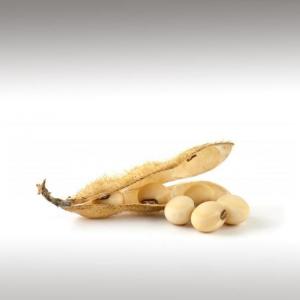

Glycine max, the Soybean, is an annual herbaceous plant in the Fabaceae, that originated in southeastern Asia (including China, Japan, and Korea)
that was domesticated more than 3,000 years ago for its edible seeds
and young pods.
It is now the world’s most important legume crop, and the sixth of all cultivated crops in terms of total harvest, and the most widely produced oil seed, grown in diverse climates worldwide.
The Soybean plant, which is densely hairy on leaves and stem, can grow to nearly 2 m tall. The fruit is a broad, hairy, flattened legume or pod, around 10 cm long, yellow to brown when fully mature and dried. Pods typically contain up to 4 beans, which vary in size and color depending on cultivar (colors range from white to reddish to black).
Soybean oil is a vegetable oil extracted from the seeds germs of the Soybean (Glycine max).
While Soybean oil has no direct insect repellent activity, it is used as a fixative to extend the short duration of action of essential oils such as Geranium oil in several commercial products.
Chemical structure:
Soy Gern oil hasFatty oil with a high content of polyunsaturated fatty acids including linoleic acid, linolenic acid. The oil contains natural tocopherols, especially however phytosterols.
Per 100g, Soybean oil has 16g of saturated fat, 23g of mono-unsaturatedfat, and 58g of poly-unsaturatedfat. The major unsaturated fatty acids in Soybean oil triglycerides are the poly-unsaturates,alpha-linolenic acid 7 - 10%, and linoleic acid 51%, and themono-unsaturate 23%. It also contains the saturated fatty acids, stearic acid, 4%, and palmitic acid 10%.
Soybean oil is a drying oil, which means that it will slowly harden upon exposure to air, forming a flexible, transparent, and waterproof solid.
It is now the world’s most important legume crop, and the sixth of all cultivated crops in terms of total harvest, and the most widely produced oil seed, grown in diverse climates worldwide.
The Soybean plant, which is densely hairy on leaves and stem, can grow to nearly 2 m tall. The fruit is a broad, hairy, flattened legume or pod, around 10 cm long, yellow to brown when fully mature and dried. Pods typically contain up to 4 beans, which vary in size and color depending on cultivar (colors range from white to reddish to black).
Soybean oil is a vegetable oil extracted from the seeds germs of the Soybean (Glycine max).
While Soybean oil has no direct insect repellent activity, it is used as a fixative to extend the short duration of action of essential oils such as Geranium oil in several commercial products.
Chemical structure:
Soy Gern oil hasFatty oil with a high content of polyunsaturated fatty acids including linoleic acid, linolenic acid. The oil contains natural tocopherols, especially however phytosterols.
Per 100g, Soybean oil has 16g of saturated fat, 23g of mono-unsaturatedfat, and 58g of poly-unsaturatedfat. The major unsaturated fatty acids in Soybean oil triglycerides are the poly-unsaturates,alpha-linolenic acid 7 - 10%, and linoleic acid 51%, and themono-unsaturate 23%. It also contains the saturated fatty acids, stearic acid, 4%, and palmitic acid 10%.
Soybean oil is a drying oil, which means that it will slowly harden upon exposure to air, forming a flexible, transparent, and waterproof solid.
Submitted by OperaDreamhouse (October 2, 2014)
Pecans Oil (Carya Illinoinensis) ☸ Base oils ☸ Base / General
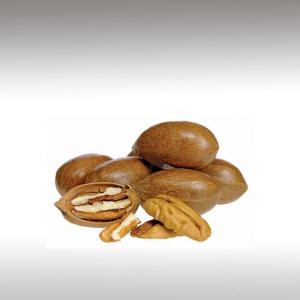

The Pecan is a species of hickory native to Mexico and southcentral and southeastern United States. "Pecan" is from an Algonquian word meaning a nut requiring a stone to crack.
Before European settlement, Pecans were widely consumed and traded by Native Americans. As a food source, pecans are a natural choice for preagricultural society. They can provide two to five times more calories per unit weight than wild game, and require no preparation.
Pecans first became known to Europeans in the 16th century. The first Europeans to come into contact with pecans were Spanish explorers in what is now Mexico, Texas, and Louisiana. These Spanish explorers called the pecan, "Tuerca de la Arruga", which roughly translates to, "Wrinkle nut" They were called this for their resemblance to wrinkles.
The Pecan tree is a large deciduous tree, growing to 20 - 40 m in height.
A Pecan, like the fruit of all other members of the hickory genus, is not truly a nut, but is technically a drupe, a fruit with a single stone or pit, surrounded by a husk. The husks are produced from the exocarp tissue of the flower, while the part known as the nut develops from the endocarp and contains the seed. The seeds of the Pecan are edible, with a rich, buttery flavor.
Pecan oil is an edible pressed oil extracted from the Pecan nut. Pecan oil is neutral in flavor and takes on the flavor of whatever seasoning is being used with it. Prior to extraction, the nuts are lightly roasted and ground. Mechanical extraction methods are then used to remove the oil. It can be extracted from raw or cooked Pecans.
Pecan oil is a light weight oil and is usually pale yellow in color. Pecan nuts contain about 65% to 70% oils.
Chemical structure:
Pecan oil contains 9,5% saturated fat, which is less than in Olive oil (13,5%), Peanut oil (16,90%) or Corn oil (12,70%).
Pecan oil is considered a healthy oil as it is rich in monounsaturated fats, specifically oleic acid, (52,0) and low in saturated fats. It also contains linoleic acid (36,6%), and small amounts of palmitic (7,1%), stearic (2,2%) and linolenic acids (1,5%).
Only Olive and Canola oils compare favorably with high quality cold pressed Pecans.
Before European settlement, Pecans were widely consumed and traded by Native Americans. As a food source, pecans are a natural choice for preagricultural society. They can provide two to five times more calories per unit weight than wild game, and require no preparation.
Pecans first became known to Europeans in the 16th century. The first Europeans to come into contact with pecans were Spanish explorers in what is now Mexico, Texas, and Louisiana. These Spanish explorers called the pecan, "Tuerca de la Arruga", which roughly translates to, "Wrinkle nut" They were called this for their resemblance to wrinkles.
The Pecan tree is a large deciduous tree, growing to 20 - 40 m in height.
A Pecan, like the fruit of all other members of the hickory genus, is not truly a nut, but is technically a drupe, a fruit with a single stone or pit, surrounded by a husk. The husks are produced from the exocarp tissue of the flower, while the part known as the nut develops from the endocarp and contains the seed. The seeds of the Pecan are edible, with a rich, buttery flavor.
Pecan oil is an edible pressed oil extracted from the Pecan nut. Pecan oil is neutral in flavor and takes on the flavor of whatever seasoning is being used with it. Prior to extraction, the nuts are lightly roasted and ground. Mechanical extraction methods are then used to remove the oil. It can be extracted from raw or cooked Pecans.
Pecan oil is a light weight oil and is usually pale yellow in color. Pecan nuts contain about 65% to 70% oils.
Chemical structure:
Pecan oil contains 9,5% saturated fat, which is less than in Olive oil (13,5%), Peanut oil (16,90%) or Corn oil (12,70%).
Pecan oil is considered a healthy oil as it is rich in monounsaturated fats, specifically oleic acid, (52,0) and low in saturated fats. It also contains linoleic acid (36,6%), and small amounts of palmitic (7,1%), stearic (2,2%) and linolenic acids (1,5%).
Only Olive and Canola oils compare favorably with high quality cold pressed Pecans.
Submitted by OperaDreamhouse (October 1, 2014)
Corn Oil (Zea Mays) ☸ Base oils ☸ Base / General
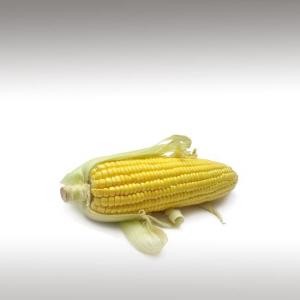

Maize, known in some English-speaking countries as Corn, is a large grain plant domesticated by indigenous peoples in Mesoamerica in prehistoric times. The leafy stalk produces ears which contain the grain, which are seeds called kernels.
Corns the most important cultivation regions are the USA, China, South America, Eastern and Southern Europe including the UK.
Most historians believe Maize was domesticated in the Tehuacan Valley of Mexico. The Olmec and Mayans cultivated it in numerous varieties throughout Mesoamerica, cooked, ground or processed through nixtamalization. Beginning about 2500 BC, the crop spread through much of the Americas.
After European contact with the Americas in the late 15th and early 16th centuries, explorers and traders carried Maize back to Europe and introduced it to other countries. Maize spread to the rest of the world because of its ability to grow in diverse climates.
The Maize plant is often 2,5 m in height, though some natural strains can grow 12 m. The stem has the appearance of a Bamboo cane and is commonly composed of 20 internodes of 18 cm length. A leaf grows from each node, which is generally 9 cm in width and 120 cm in length.
Thecob is close to a multiple fruit in structure, except that the individual fruits never fuse into a single mass. The grains are about the size of peas, and adhere in regular rows around a white, pithy substance, which forms the ear. An ear commonly holds 600 kernels.
Young ears can be consumed raw, with the cob and silk, but as the plant matures (usually during the summer months), the cob becomes tougher and the silk dries to inedibility.
Corn oil (Maize oil) is oil extracted from the germ of Corn (Maize). The seed contains 30 - 40% oilwhich is obtained by pressing and extraction.
Corn oil is regarded highly for its functionality, exceptional flavor, economy, and health benefits. It is a concentrated source of energy, is very digestible, providesessential fatty acids and Vitamin E, and is a rich source of polyunsaturated fatty acids.
Some specialty oil producers manufacture unrefined, 100% expeller pressed Corn oil. This is a more expensive product since it has a much lower yield than the combination expeller and solvent process, as well as smaller market share.
Chemical structure:
Of the saturated fatty acids, 80% are palmitic acid, 14% stearic acid, and 3% arachidic acid. Over 99% of themonounsaturated fatty acids are oleic acid .98% of the polyunsaturated fatty acids are the omega-6 linoleic acid with the 2% remainder being the omega-3 alpha-linolenic acid.
Corns the most important cultivation regions are the USA, China, South America, Eastern and Southern Europe including the UK.
Most historians believe Maize was domesticated in the Tehuacan Valley of Mexico. The Olmec and Mayans cultivated it in numerous varieties throughout Mesoamerica, cooked, ground or processed through nixtamalization. Beginning about 2500 BC, the crop spread through much of the Americas.
After European contact with the Americas in the late 15th and early 16th centuries, explorers and traders carried Maize back to Europe and introduced it to other countries. Maize spread to the rest of the world because of its ability to grow in diverse climates.
The Maize plant is often 2,5 m in height, though some natural strains can grow 12 m. The stem has the appearance of a Bamboo cane and is commonly composed of 20 internodes of 18 cm length. A leaf grows from each node, which is generally 9 cm in width and 120 cm in length.
Thecob is close to a multiple fruit in structure, except that the individual fruits never fuse into a single mass. The grains are about the size of peas, and adhere in regular rows around a white, pithy substance, which forms the ear. An ear commonly holds 600 kernels.
Young ears can be consumed raw, with the cob and silk, but as the plant matures (usually during the summer months), the cob becomes tougher and the silk dries to inedibility.
Corn oil (Maize oil) is oil extracted from the germ of Corn (Maize). The seed contains 30 - 40% oilwhich is obtained by pressing and extraction.
Corn oil is regarded highly for its functionality, exceptional flavor, economy, and health benefits. It is a concentrated source of energy, is very digestible, providesessential fatty acids and Vitamin E, and is a rich source of polyunsaturated fatty acids.
Some specialty oil producers manufacture unrefined, 100% expeller pressed Corn oil. This is a more expensive product since it has a much lower yield than the combination expeller and solvent process, as well as smaller market share.
Chemical structure:
Of the saturated fatty acids, 80% are palmitic acid, 14% stearic acid, and 3% arachidic acid. Over 99% of themonounsaturated fatty acids are oleic acid .98% of the polyunsaturated fatty acids are the omega-6 linoleic acid with the 2% remainder being the omega-3 alpha-linolenic acid.
Submitted by OperaDreamhouse (October 1, 2014)
Cottonseed Oil (Gossypium Hirsutum) ☸ Base oils ☸ Base / General
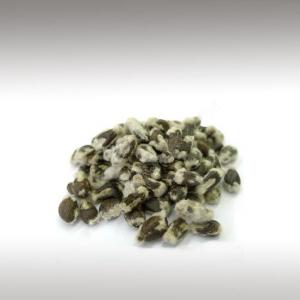

Cottonseed oil is a cooking oil extracted from the seeds of Cotton plants of various species, mainly Gossypium Hirsutum and Gossypium Herbaceum, that are grown for Cotton fiber, animal feed, and oil.
Cottonseed oil has a mild taste and appears generally clear with a light golden color, the amount of color depending on the amount of refining.
Cottonseed oil has a smoke point of about 232 °C, and is high in tocopherols, which also contribute its stability, giving products that contain it a long shelf life, hence manufacturers proclivity to use it in packaged goods.
While crushing of Cottonseed for its oil was documented in the early Hindu medical books, and small crushes took place in European plants during the first part of the nineteenth century, it was the invention of the Cotton gin by Eli Whitney in 1794, and the need to deal with the Cottonseed left over after the fiber had been removed, that spurred innovations in oil crushing.
Chemical structure:
Itsfatty acid profile generally consists of 70% unsaturated fatty acids (18% monounsaturated, and 52% polyunsaturated), 26% saturated fatty acids. When it is fully hydrogenated, its profile is 94% saturated fat and 2% unsaturated fatty acids (1,5% monounsaturated, and 0,5% polyunsaturated).
According to the Cottonseed oil industry, Cottonseed oil does not need to be hydrogenated as much as other polyunsaturated oils to achieve similar results.
Gossypol is a toxic, yellow, polyphenolic compound produced by Cotton and other members of the order Malvaceae, such as okra. This naturally occurring coloured compound is found in tiny glands in the seed, leaf, stem, tap root bark, and root of the Cotton plant. The adaptive function of the compound facilitates natural insect resistance. The three key steps ofrefining, bleaching and deodorization in producing finished oil act to eliminate the gossypol level.
Cottonseed oil has a mild taste and appears generally clear with a light golden color, the amount of color depending on the amount of refining.
Cottonseed oil has a smoke point of about 232 °C, and is high in tocopherols, which also contribute its stability, giving products that contain it a long shelf life, hence manufacturers proclivity to use it in packaged goods.
While crushing of Cottonseed for its oil was documented in the early Hindu medical books, and small crushes took place in European plants during the first part of the nineteenth century, it was the invention of the Cotton gin by Eli Whitney in 1794, and the need to deal with the Cottonseed left over after the fiber had been removed, that spurred innovations in oil crushing.
Chemical structure:
Itsfatty acid profile generally consists of 70% unsaturated fatty acids (18% monounsaturated, and 52% polyunsaturated), 26% saturated fatty acids. When it is fully hydrogenated, its profile is 94% saturated fat and 2% unsaturated fatty acids (1,5% monounsaturated, and 0,5% polyunsaturated).
According to the Cottonseed oil industry, Cottonseed oil does not need to be hydrogenated as much as other polyunsaturated oils to achieve similar results.
Gossypol is a toxic, yellow, polyphenolic compound produced by Cotton and other members of the order Malvaceae, such as okra. This naturally occurring coloured compound is found in tiny glands in the seed, leaf, stem, tap root bark, and root of the Cotton plant. The adaptive function of the compound facilitates natural insect resistance. The three key steps ofrefining, bleaching and deodorization in producing finished oil act to eliminate the gossypol level.
Submitted by OperaDreamhouse (October 1, 2014)
Page 31 of 48

